Actinolite Asbestos
Actinolite Asbestos: A Detailed Look at Its Risks and Regulations
Are you living or working in a building constructed before the 1990s? If so, you might be sharing your space with an invisible and potentially deadly guest: Actinolite Asbestos.
This naturally occurring mineral, once hailed as a ‘miracle material’ for its fire resistance and insulation properties, is now known to pose serious health risks.
In this comprehensive guide, we’ll delve into the world of Actinolite Asbestos, exploring its history, health implications, and the regulations designed to protect us. The information you’ll find here could be crucial for your health and safety, so let’s get started.
Key Takeaways
Actinolite Asbestos: Actinolite is one of the six types of asbestos and is commonly found in insulation, gardening, and fireproofing materials.
Health Risks: Exposure to actinolite asbestos can lead to serious health issues, including asbestosis, lung cancer, and mesothelioma.
Prevention and Safety Measures: Preventing asbestos exposure involves being aware of the locations and conditions of asbestos-containing materials, using appropriate personal protective equipment, and following safe work procedures.
Asbestos Testing and Abatement: If you suspect the presence of asbestos in your home or workplace, it’s crucial to have it tested by professionals. Asbestos abatement should also be carried out by certified professionals to ensure safety and compliance with regulations.
Legal Aspects: Property owners, employers, and workers have legal obligations and rights related to asbestos. Individuals affected by asbestos-related health issues may also have legal recourse.
Resources: For further information on asbestos and how to manage its risks, visit our About Asbestos page.
Contents
- Brief Overview of Actinolite Asbestos
- Understanding Asbestos
- The Unique Characteristics of Actinolite Asbestos
- The History of Asbestos Use
- Actinolite Asbestos in Buildings
- Health Risks Associated with Actinolite Asbestos
- Actinolite Asbestos Regulations: Protecting Public Health
- Actinolite Asbestos Exposure: Prevention and Safety Measures
- Actinolite Asbestos Testing and Abatement
- Legal Aspects of Actinolite Asbestos Handling
- FAQ
- Conclusion
10% OFF
Schedule services online and save!
Available for home owners, landlords, businesses & property managers. If you are a tenant, please call to schedule your appointment.
YOUR PROMO CODE
MARCH10
Valid until March 31st, 2023
Brief Overview of Actinolite Asbestos
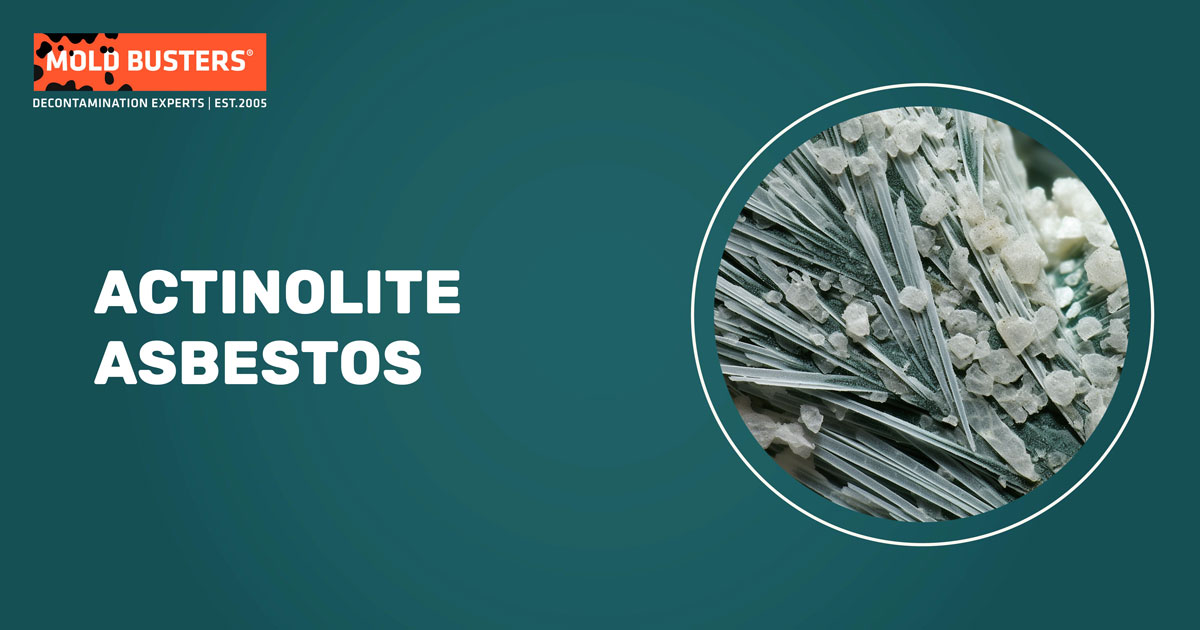
Actinolite asbestos is often found in insulation, gardening, and fireproofing materials. Understanding what it is, where it’s found, and the risks associated with it is essential for your safety and health.
| Type of Asbestos | Actinolite |
|---|---|
| Color | White, Grey, Brown, Green |
| Crystal System | Orthorhombic |
| Chemical Composition | Calcium Iron Magnesium Silicate Hydroxide |
| Common Uses | Insulation, gardening materials, and fireproofing |
| Health Risks | Asbestosis, Lung Cancer, Mesothelioma |
| Prevention Measures | Regular inspections, use of personal protective equipment (PPE), professional asbestos testing and abatement |
| Legal Aspects | Compliance with EPA and OSHA regulations, legal obligations of property owners and employers, workers’ rights, potential legal recourse for asbestos-related health issues |
Importance of Understanding Risks and Regulations
Asbestos, including actinolite, was widely used in construction and other industries for its heat resistance and durability. However, it’s now known to pose serious health risks when its fibers are inhaled or ingested.
That’s why it’s so important to understand the risks and regulations surrounding this material. Let’s get started!
Understanding Asbestos
What is Asbestos?
Asbestos is a naturally occurring mineral made up of thin, tightly packed fibers. It’s unique for its ability to resist heat, fire, and electricity. Asbestos is derived from metamorphic rock and naturally occurs in every continent around the world. You can learn more about asbestos in general here.
Types of Asbestos: From Chrysotile to Actinolite
There are six different types of asbestos: Chrysotile, Amosite, Crocidolite, Anthophyllite, Tremolite, and Actinolite. Each type has its own characteristics and uses. Chrysotile, for instance, is the most commonly used type of asbestos, found in roofs, ceilings, insulations, and floors. Actinolite, on the other hand, is mainly found in insulation, gardening, and fireproofing materials. You can learn more about the different types of asbestos here.
The Unique Characteristics of Actinolite Asbestos
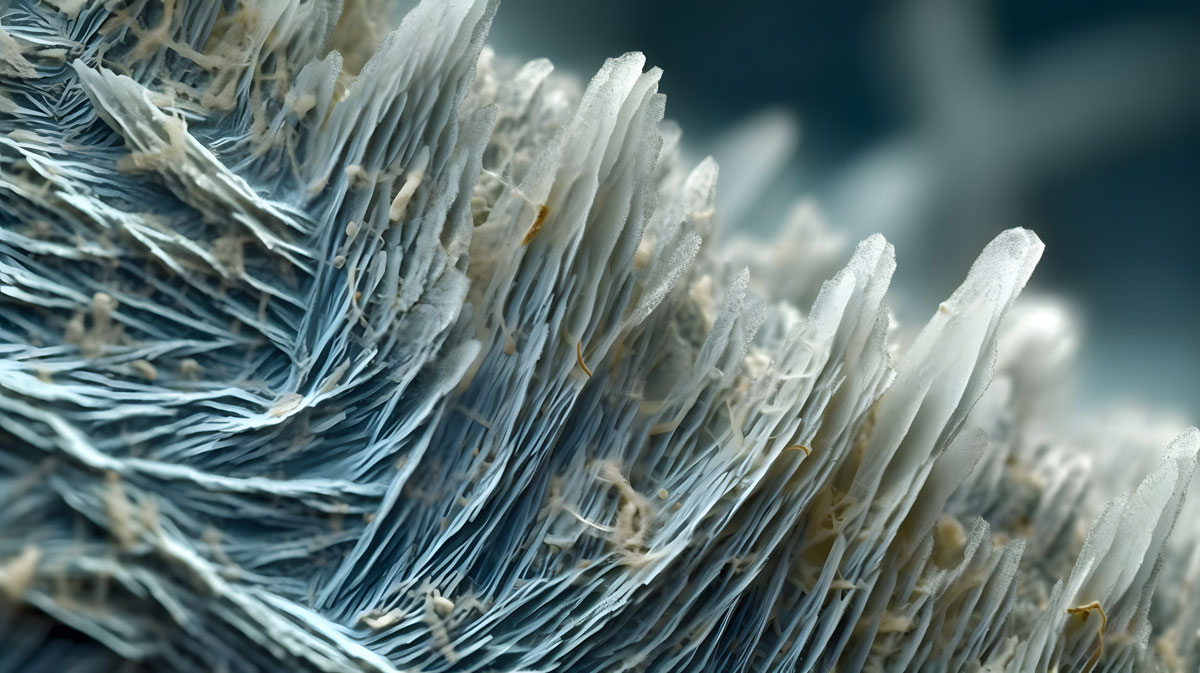
Actinolite asbestos is unique in its properties and uses. It’s often used in insulation and fireproofing due to its resistance to heat. However, like all types of asbestos, it poses health risks when its fibers are inhaled or ingested. In the next sections, we’ll delve deeper into these risks and how to mitigate them.
Stay tuned as we continue to explore this topic in the following sections. We’ll be discussing the health risks associated with actinolite asbestos, the regulations in place to protect people from these risks, and how to identify and handle this material safely.
The History of Asbestos Use
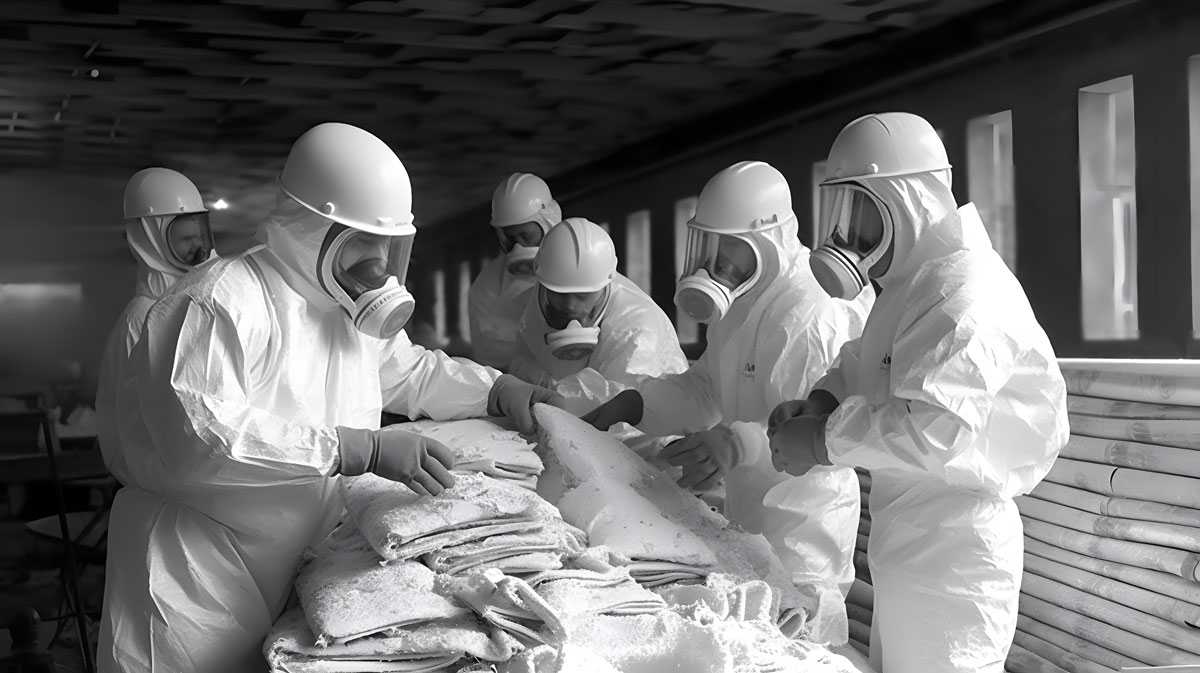
The Rise of Asbestos in the Construction Industry
Asbestos, a naturally occurring mineral, was widely used in the construction industry due to its unique properties. It’s fire-resistant, durable, and has excellent insulation capabilities, making it a popular choice for builders and architects. However, the use of asbestos came with a significant downside – its detrimental effects on health.
Actinolite Asbestos: A Historical Perspective
Actinolite asbestos, one of the six types of asbestos, was primarily used in insulation, gardening, and fireproofing materials. Despite its widespread use, the health risks associated with actinolite asbestos were not widely recognized until much later. This delay in understanding its harmful effects has led to numerous health issues for those exposed to it.
Actinolite Asbestos in Buildings
Common Places Where Actinolite Asbestos is Found
Actinolite asbestos can be found in various parts of a building. It was commonly used in insulation materials, making it prevalent in walls, ceilings, and around pipes. It was also used in gardening materials and fireproofing applications. If your home or building was constructed before the 1990s, there’s a chance that actinolite asbestos may be present.
Identifying Actinolite Asbestos in Your Environment
Identifying actinolite asbestos in your environment can be challenging due to its microscopic nature. However, if your building was constructed during the era when asbestos use was rampant, it’s advisable to have it tested by professionals. At Mold Busters, we offer comprehensive asbestos testing services to ensure your environment is safe.
Remember, disturbing asbestos-containing materials can release harmful fibers into the air, which can be inhaled and lead to serious health issues. Therefore, it’s crucial to leave the testing and removal to professionals to avoid unnecessary exposure.
In the next sections, we’ll delve deeper into the health risks associated with actinolite asbestos and the regulations in place to control its use. Stay tuned!
Health Risks Associated with Actinolite Asbestos

The Impact of Asbestos Exposure on Health
Asbestos, including actinolite, is a known carcinogen, meaning it has the potential to cause cancer. When asbestos-containing materials are disturbed, they release tiny fibers into the air. These fibers can be inhaled and become lodged in the lungs, leading to serious health problems over time. The most common immediate side effects are shortness of breath and tightness in your chest. It can take five to twenty years for a person to die from asbestos exposure after the symptoms develop.
From Asbestosis to Mesothelioma: The Deadly Consequences
Exposure to asbestos can lead to a range of diseases, including asbestosis, lung cancer, and mesothelioma. Asbestosis is a chronic lung disease that causes shortness of breath and can lead to serious complications. Lung cancer is a common outcome of asbestos exposure, and mesothelioma, a rare form of cancer that affects the lining of the lungs, is almost exclusively caused by asbestos exposure.
The Long-Term Effects of Asbestos Exposure
The long-term effects of asbestos exposure can be severe. Asbestos fibers can remain in the lungs for a long time, causing inflammation and scarring that can lead to breathing difficulties and other health problems. Over time, these conditions can become life-threatening.
Actinolite Asbestos Regulations: Protecting Public Health
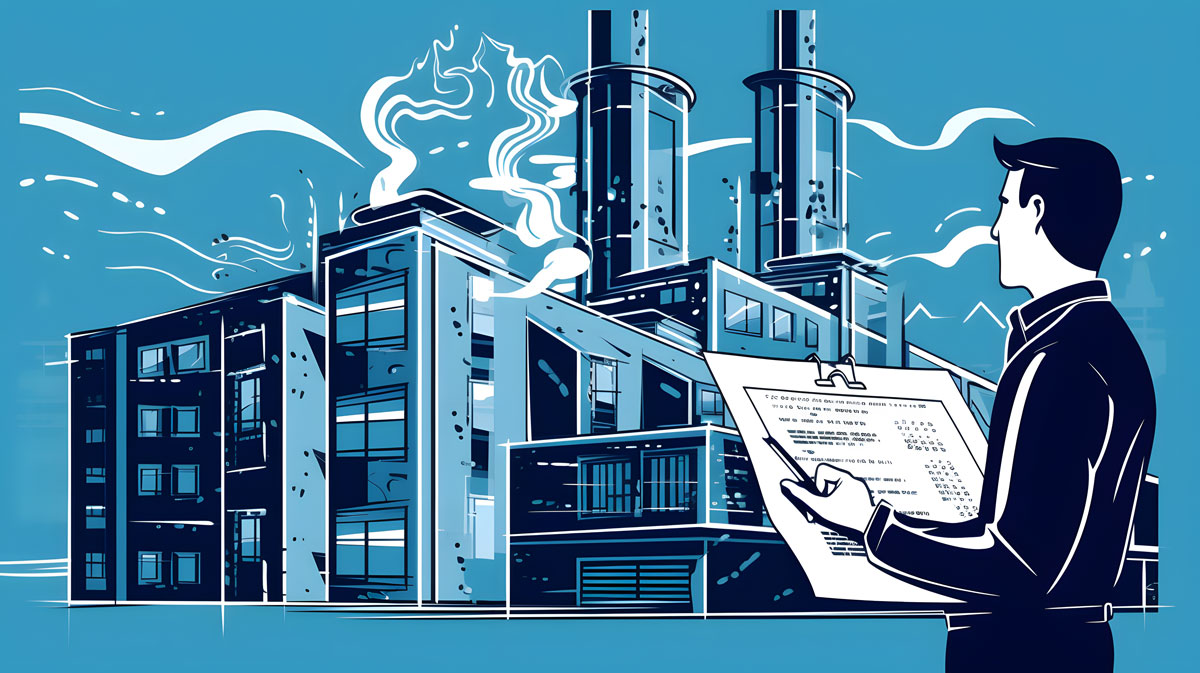
The Role of the Environmental Protection Agency (EPA) in Regulating Actinolite Asbestos
The EPA plays a crucial role in regulating asbestos, including Actinolite. It has set strict guidelines for asbestos management and abatement, aiming to minimize the risk of exposure. The EPA also enforces laws like the Clean Air Act and the Toxic Substances Control Act, which have specific provisions related to asbestos.
Occupational Safety and Health Administration (OSHA) Guidelines for Actinolite Asbestos
OSHA has set specific standards for workplaces to protect employees from asbestos exposure. These standards cover various aspects, including exposure limits, required use of personal protective equipment (PPE), and procedures for handling asbestos materials. For Actinolite Asbestos, these regulations are particularly important given its harmful effects.
Global Actinolite Asbestos Regulations: A Comparative Analysis
Asbestos regulations vary globally. While some countries have banned all forms of asbestos, including Actinolite, others have specific regulations for its use. A comparative analysis can provide insights into how different countries are tackling the issue and the effectiveness of their approaches.
For more detailed information on the health risks associated with asbestos and the regulations in place to protect public health, you can visit our resources page. If you suspect that you have asbestos in your property, consider scheduling an asbestos test today.
Actinolite Asbestos Exposure: Prevention and Safety Measures
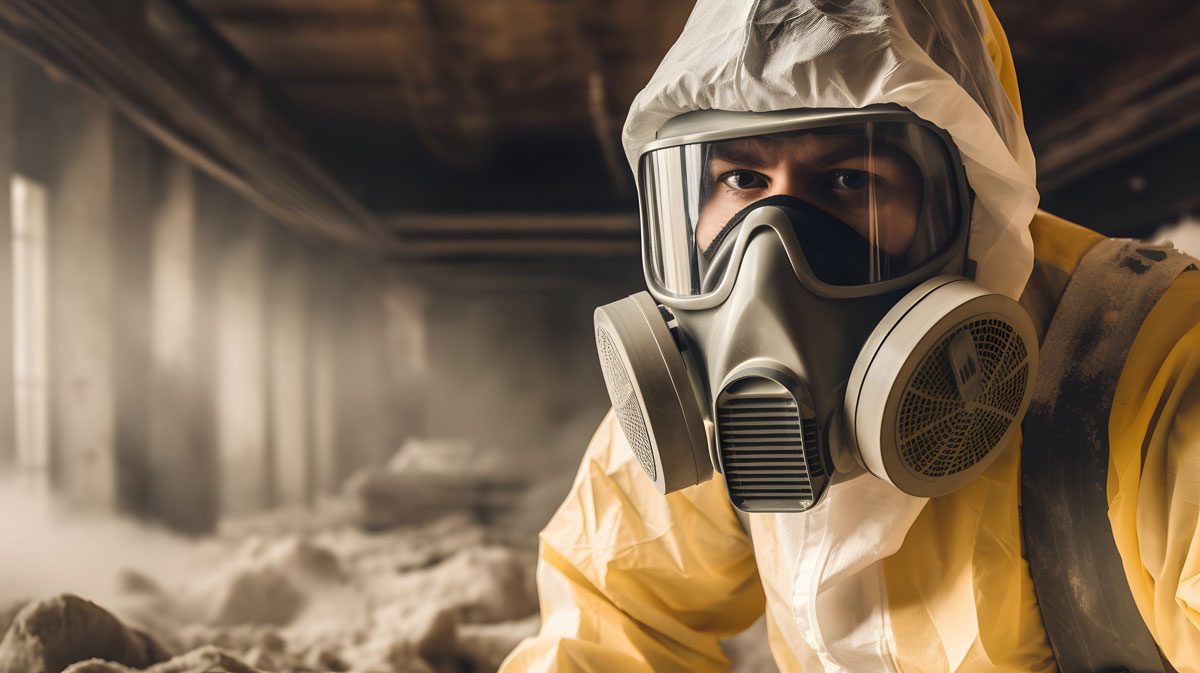
Preventing Actinolite Asbestos Exposure: Best Practices
Understanding the risks associated with Actinolite Asbestos is the first step towards prevention. It’s crucial to avoid disturbing materials that may contain asbestos, as this can release harmful fibers into the air. If you suspect the presence of Actinolite Asbestos in your home or workplace, it’s best to leave it undisturbed and seek professional advice.
Safety Measures for Workers Handling Actinolite Asbestos
Workers who may come into contact with Actinolite Asbestos should be trained in proper handling procedures. This includes understanding how to avoid disturbing asbestos and what to do if they suspect its presence. It’s also important to use appropriate tools and equipment to minimize the release of asbestos fibers.
Personal Protective Equipment (PPE) for Actinolite Asbestos: A Necessary Precaution
When dealing with Actinolite Asbestos, using the right PPE is crucial. This includes respirators that can filter out asbestos fibers and protective clothing that can be removed and cleaned after use. Remember, regular masks and clothing are not sufficient protection against asbestos fibers.
Actinolite Asbestos Testing and Abatement
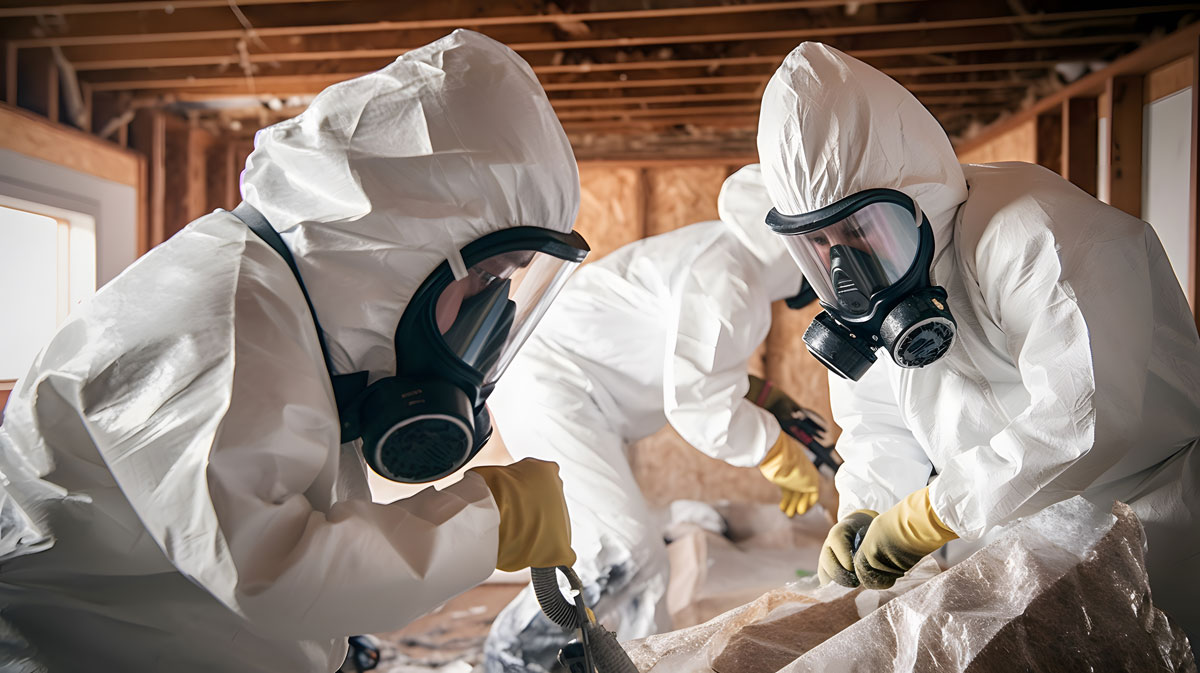
When and Why to Test for Actinolite Asbestos
If your home or workplace was built before the 1990s, it’s a good idea to test for Actinolite Asbestos, especially before any renovation or demolition work. Asbestos was commonly used in construction materials, and Actinolite was one of the types often used. Testing can help ensure the safety of occupants and workers.
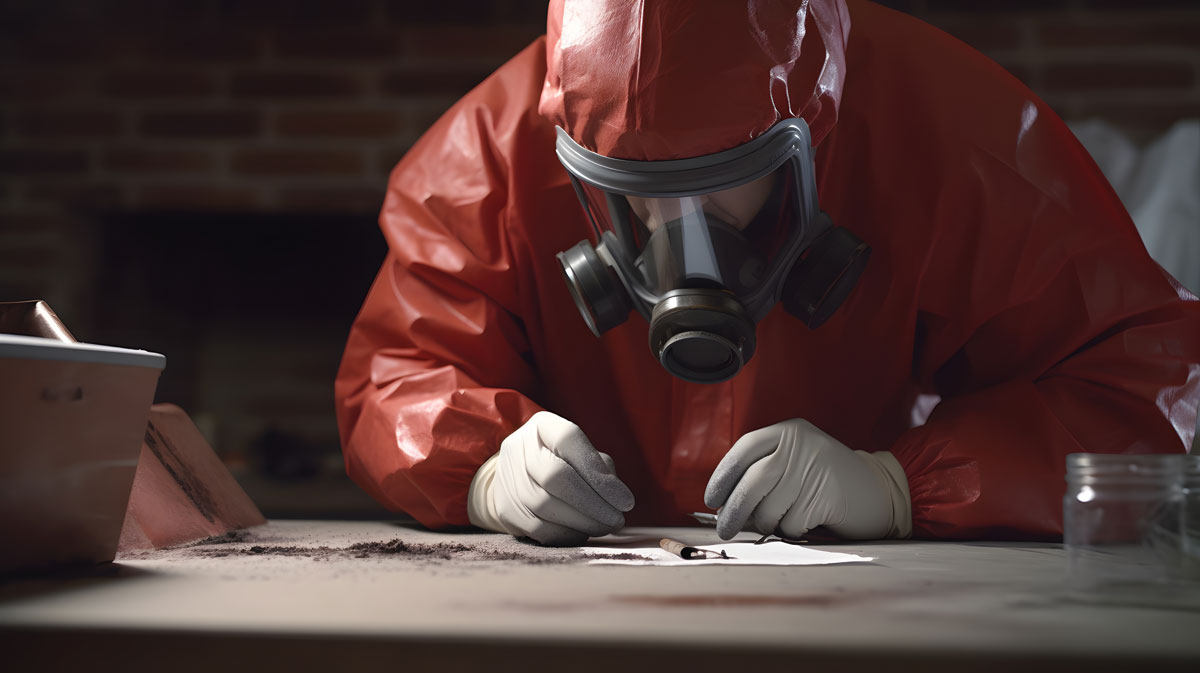
The Process of Actinolite Asbestos Abatement
Asbestos abatement involves safely removing or sealing off asbestos-containing materials to prevent the release of harmful fibers. It’s a complex process that should be carried out by trained professionals. The process includes sealing off the area, using specialized equipment to remove or encapsulate the asbestos, and properly disposing of the waste.
Choosing a Certified Actinolite Asbestos Abatement Professional
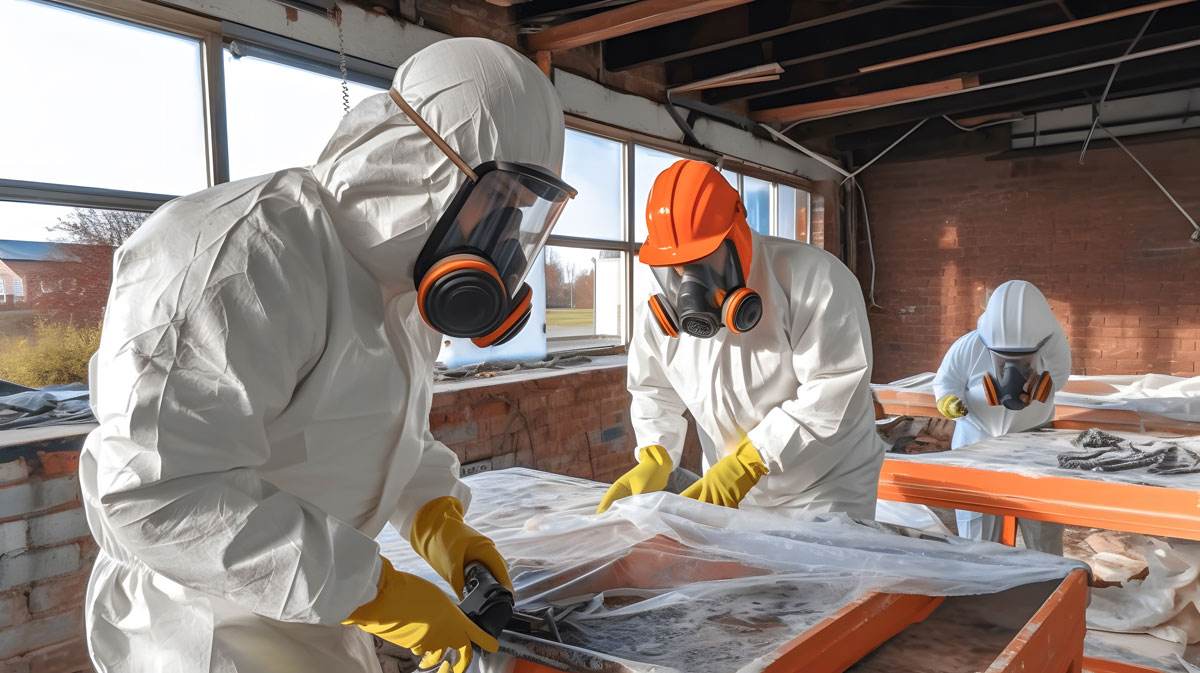
When it comes to dealing with Actinolite Asbestos, it’s important to choose a certified abatement professional. They have the training and equipment to handle asbestos safely and effectively. Look for professionals who are certified by relevant health and safety organizations and have a good track record in the field.
Legal Aspects of Actinolite Asbestos Handling
Legal Obligations for Property Owners Regarding Actinolite Asbestos
Property owners have a legal obligation to manage the risks associated with Actinolite Asbestos in their buildings. This includes conducting regular inspections, informing occupants about the presence of asbestos, and taking appropriate action if asbestos-containing materials are disturbed or deteriorated.
Workers’ Rights and Employer Responsibilities in Handling Actinolite Asbestos
Employers have a responsibility to protect their workers from exposure to Actinolite Asbestos. This includes providing appropriate training, personal protective equipment, and medical examinations. Workers have the right to a safe workplace and can refuse work that they believe is unsafe due to asbestos exposure.
Legal Recourse for Actinolite Asbestos-Related Health Issues
Individuals who develop health issues related to Actinolite Asbestos exposure may have legal recourse. This can include workers’ compensation claims or lawsuits against negligent parties. Legal advice should be sought in such situations to understand the options and procedures.
Our Services
Our most popular services include:
🔎 Request a Free Consultation
FAQ
Asbestos is a term used for six naturally occurring silicate minerals, which are all composed of long and thin fibrous crystals. The six types are Chrysotile, Amosite, Crocidolite, Tremolite, Anthophyllite, and Actinolite. Chrysotile, also known as white asbestos, is the most commonly used form. Actinolite, along with Amosite and Crocidolite, belongs to the Amphibole class of asbestos, characterized by their needle-like fibers.
Asbestos fibers, including Actinolite, are small enough to become airborne and can be inhaled when asbestos-containing materials are disturbed. Over time, these fibers can accumulate in the lungs, leading to serious health issues such as asbestosis, lung cancer, and malignant mesothelioma.
Actinolite asbestos was used in various commercial products and building materials due to its heat-resistant properties. It can be found in insulation, ceiling tiles, floor tiles, and even in some types of paint. It’s also been used in brake linings and other friction materials.
Construction workers should be aware of the potential presence of Actinolite asbestos in older buildings. They should use personal protective equipment (PPE), including respirators, to protect against inhaling asbestos dust. If asbestos is suspected, work should stop until a risk assessment can be conducted and appropriate safety measures implemented.
Exposure to Actinolite asbestos, like other forms of asbestos, increases the risk of developing asbestos-related cancers, such as lung cancer and mesothelioma. The risk is particularly high for those with occupational exposure, such as construction workers and plumbers, who may come into contact with asbestos-containing materials like pipe insulation and asbestos textiles.

Conclusion
The Importance of Awareness and Action in Dealing with Actinolite Asbestos
Understanding the risks associated with Actinolite Asbestos and taking proactive steps to manage these risks is crucial. Whether you’re a property owner, employer, or worker, your awareness and actions can protect you and others from the harmful effects of this hazardous material.
Resources for Further Information on Actinolite Asbestos
For further information on asbestos and how to manage its risks, you can visit our About Asbestos page. Here, you’ll find detailed information on different types of asbestos, including amosite, chrysotile, crocidolite, tremolite, and anthophyllite. You can also learn about asbestos in various building materials such as drywall, insulation, popcorn ceilings, and tiles.